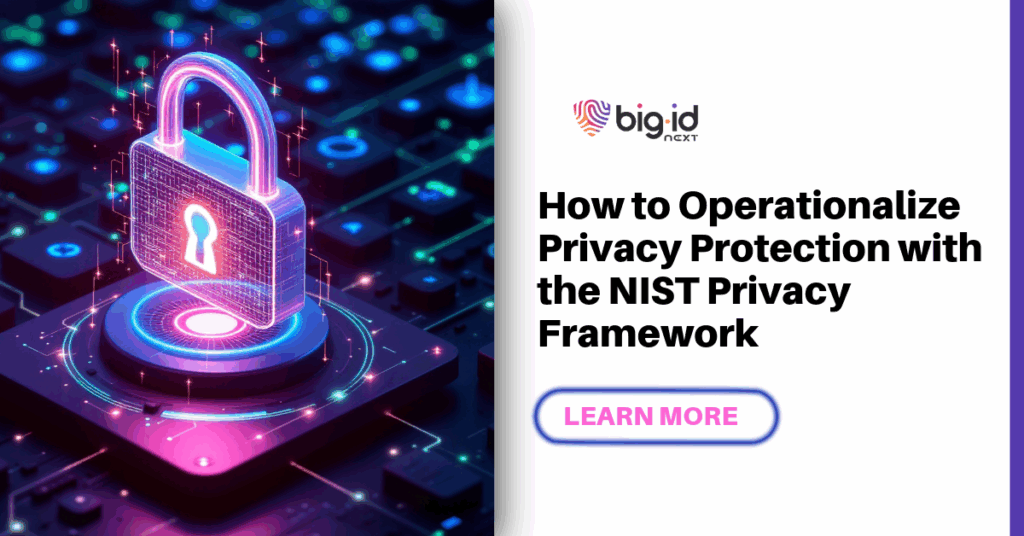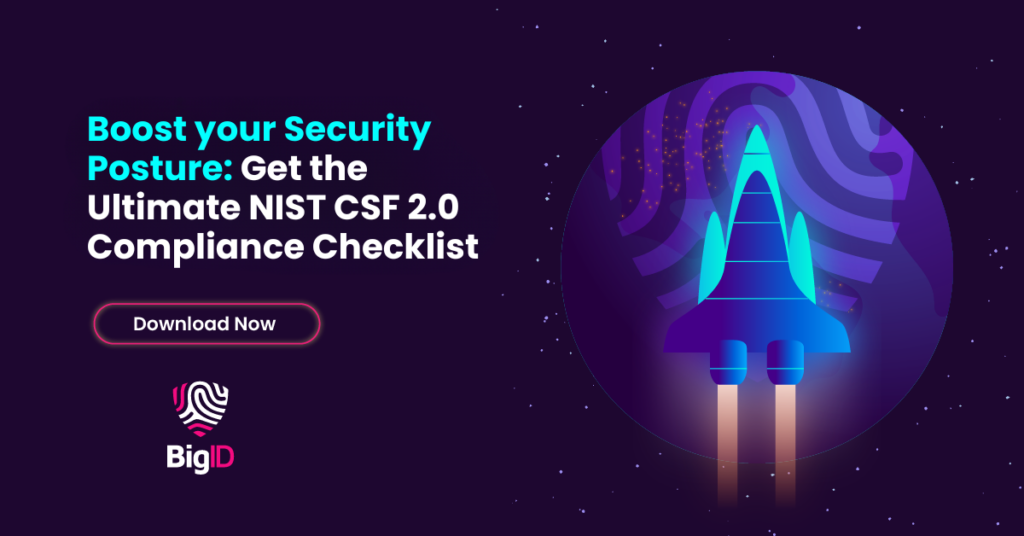We live in a world where data drives everything from customer experiences to AI innovation. However, organizations must contend with growing privacy regulations and increasingly complex data ecosystems. As a result, organizations require a structured, data-centric, risk-based approach. The NIST Privacy Framework (PF), developed by the National Institute of Standards and Technology, offers precisely that: a practical blueprint to help businesses identify, assess, and manage privacy risks without stifling innovation.
How the NIST Privacy Framework Has Evolved
The NIST Privacy Framework has evolved from version 1.0 to 1.1 to better address the rapidly changing landscape of data privacy, emerging technologies like AI, and growing regulatory expectations. Version 1.1 expands on the original framework’s core functions—Identify, Govern, Control, Communicate, and Protect—by refining terminology, clarifying outcomes, and adding greater emphasis on data processing ecosystem risks, privacy engineering, and organizational accountability. These updates provide more precise guidance for aligning privacy risk management with enterprise risk strategies, while helping organizations operationalize privacy by design, improve cross-functional collaboration, and prepare for both current and future compliance demands.
How BigID Supports the NIST Privacy Framework
The NIST Privacy Framework is a flexible and risk-based tool that helps organizations manage privacy risks in a structured and scalable manner. But frameworks alone don’t ensure results. To bring privacy into action, organizations need to undergo a digital transformation that aligns with the right people, processes, and technology to make it work across departments, data sources, and workflows.
This is where BigID plays a pivotal role: translating the NIST Privacy Framework into day-to-day operations with a purpose-built data privacy program that reduces risk, increases trust, and demonstrates accountability.
BigID helps organizations operationalize the NIST Privacy Framework by delivering the data intelligence, automation, and governance capabilities needed to meet the five core functions—Identify-P, Govern-P, Control-P, Communicate-P, and Protect-P. Here’s how:
Identify-P
Develop an organizational understanding of managing privacy risk by identifying and mapping data processing activities.
How BigID Helps to Identify
BigID automatically discovers and classifies personal and sensitive data across structured, unstructured, cloud, SaaS, and on-premises environments, building an accurate data inventory to record the purpose of processing, assess risk, and gain complete visibility into what data you have and where it resides.
Govern-P
Develop and implement governance structures to manage data in alignment with organizational values and regulations.
How BigID Helps to Govern
With BigID, privacy, legal, and audit teams can reduce risk and automate oversight with compliance dashboards, surface policy violations, and monitor data subject requests. BigID helps operationalize privacy risk management frameworks like the NIST by enabling visibility across data flows, identifying shadow data, and automating risk classification and mitigation.
Control-P
Definition: Develop and implement appropriate activities to enable organizations or individuals to manage data with sufficient granularity, thereby mitigating privacy risks.
How BigID Helps to Control
BigID helps organizations manage, monitor, and track data to gain complete visibility and enforce policies on sensitive data across their environments, effectively mitigating privacy risk, fulfilling data subject rights (DSAR), managing consent preferences, and ensuring appropriate access controls to identify overexposed and over-privileged data.
Communicate-P
Definition: Ensure organizations communicate data practices clearly and consistently to individuals and regulators.
How BigID Helps to Communicate
BigID enables cross-functional collaboration and data communication through shared privacy risk assessment workflows, customizable policy templates, and centralized governance that aligns IT, privacy, security, legal, product, and business stakeholders. By unifying these teams around a single platform, BigID fosters consistent communication, data protection, transparency, and accountability across the entire data lifecycle.
Protect-P
Definition: Implement appropriate data protection measures to manage the risks of unauthorized access and disclosure.
How BigID Helps to Protect
BigID helps organizations automatically discover, classify, and label sensitive and at-risk data to enforce policy-based controls, reduce unauthorized access, and trigger automated remediation workflows for actionable data protection. With visibility into data access, usage, and security posture, BigID enables teams to manage privacy risks, support least-privilege access, remediate misconfigurations, and strengthen data protection across systems and infrastructure.
Whether you’re starting a privacy program or maturing your privacy posture, BigID helps bring the NIST Privacy Framework to life. Explore how BigID maps to NIST’s Privacy Framework with a demo today.


